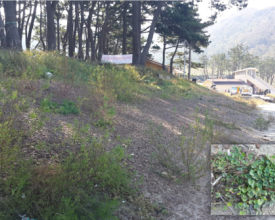
Eco-friendly Biopolymer for Sustainable Coastal Erosion Prevention

Korea National Park Service (KNPS) succeeded in restoring the eroded coast of Gwanmae-do Island, Jindo-gun, in the Dadohaehaesang National Park with eco-friendly technology using biopolymer-based natural paving materials.
The existing techniques to prevent coastal erosion, using cement concrete structures or natural stone masonry, cause physical problems, such as dislocation and cracking over time after construction. In addition, cement structures loose toxic substances, which destroy the surrounding ecosystem and adversely affect nearby landscapes.
A biopolymer-based natural paving material is the blend of high-molecular compounds extracted from plants and natural aggregates such as gravels. It contains many pores on the surface and inside. Therefore, when a strong wave hits the surface, seawater is dispersed between the pores, which significantly lowers the wave energy and increases the durability of the structure.
Impacts
The use of biopolymer-based natural paving material has been piloted, tested and monitored by the Dadohaehaesang National Park since October 2012. Biopolymer hardens underwater, which helped to consolidate the construction. The strength of the material does not decrease, even when exposed to seawater for a long time and even severe typhoons.
The results of the restored areas monitoring show that sand was deposited between the natural paving materials and various plants living in the sand dune, such as Calystegia soldanella grew well to maintain a natural coastal landscape. The erosion prevention effect was also excellent, and it even played a role in protecting the forest of Pinus thunbergii located at the back of the coast.
KNPS continues to promote restoration projects by using biopolymer-based eco-friendly method, and plans to expand eco-friendly restoration projects to other areas such as trails.












